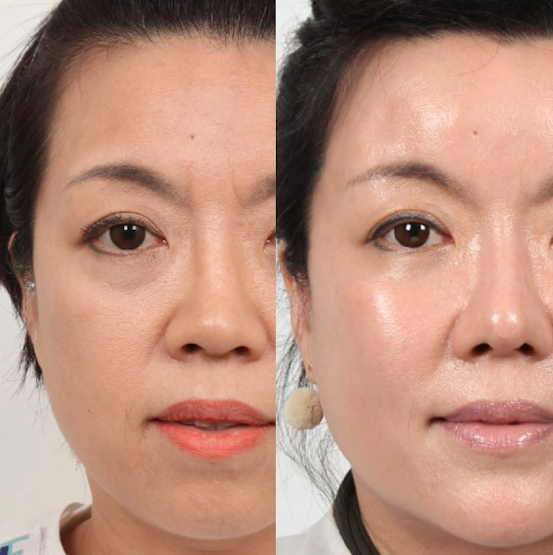680. <Jaw Surgery>
Jaw surgery refers to procedures and surgeries that aim to aesthetically improve or functionally correct the shape or position of the jaw. Non-surgical treatments for the jaw include jaw Botox and jaw fillers. Jaw Botox includes masseter Botox to reduce the square jaw and mentalis Botox to reduce chin dimpling (commonly known as "pebble chin"). Jaw fillers are used to address jaw asymmetry or to temporarily correct underdeveloped chins (also known as "recessed chins").
An underdeveloped chin can lead to the formation of a double chin, sagging chin fat, and the appearance of protruding lips. Therefore, chin advancement surgery may be necessary to correct double chins, sagging chin fat, or protruding lips. Especially in cases of underdeveloped chins, medical facial photography and 3D CT analysis are conducted to plan for chin advancement surgery.
The causes of recessed chins can be congenital—passed down through generations—or acquired through lifestyle habits such as eating quickly, chewing inadequately, or sleeping with the mouth open due to nasal congestion. In order to correct recessed chins, inserting artificial implants can lead to complications such as bone resorption, inflammation, or fluid accumulation. Therefore, it's better to correct the structure through bone-cutting techniques like osteotomy or bone resection.
To advance the chin, various surgical techniques such as horizontal osteotomy, vertical osteotomy, and inverted V-shaped osteotomy are performed. If the patient also has a narrow airway, a genioglossus advancement may be included in the surgery. This involves advancing the root of the tongue along with the chin, helping to widen the airway behind the tongue—resulting in functional improvement as well.
In severe cases of mandibular retrusion with obstructive sleep apnea, chin advancement alone may not be sufficient. In such cases, double jaw surgery may be required, where the upper jaw is reduced, and the lower jaw is rotated counterclockwise to advance the chin, often combined with genioplasty.
Conversely, if the chin is overly protruded, a reduction genioplasty, sometimes referred to as a "witch chin" correction, is performed. If the entire lower jaw is protruded and causes malocclusion, a sagittal split osteotomy (SSO) is used to reposition only the lower jaw. In some cases, the upper and lower jaws are repositioned separately—moving the upper jaw forward and the lower jaw backward—requiring double jaw surgery. A CT scan is used to evaluate the airway length to determine whether single or double jaw surgery is appropriate.
In cases of square jaw, both cortical bone resection and mandibular angle reduction (angle ostectomy) are performed simultaneously. If the chin is underdeveloped, chin advancement may also be performed. On the other hand, if the chin is overdeveloped, it can be reduced and reshaped, similar to contouring. Based on aesthetic preferences, V-line square jaw surgery can be performed to slim the chin and jawline.
Over the past decade, advancements in craniofacial surgical techniques in plastic surgery have made jaw reconstructive surgery easier with the help of 3D printing, and navigation systems now allow for more precise jaw positioning. Jaw surgery has evolved into a more comprehensive facial surgery that not only focuses on cosmetic improvements but also emphasizes functional enhancements from a scientific and holistic perspective.
[Jaw surgery is a type of facial surgery aimed at both cosmetic and functional (chewing, airway, TMJ) improvements of the lower face.]
– 680mm Growing Pine Tree –





















